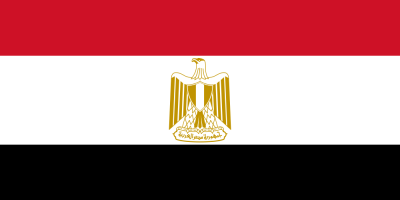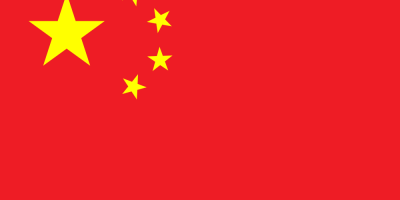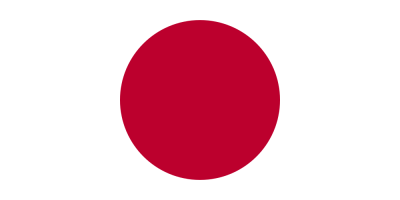Cambodia flag color codes features iconic imagery reflecting the country’s rich history and complex modern identity. The prominent elements include the iconic depictions of Angkor Wat, blue and red background stripes, and a centered white emblem. Decoding the precise Cambodia flag color codes in formats like HTML HEX, RGB, PANTONE, HSL, CMYK, HWB, and NCOL defines the specific shades used in this banners intricate design. Understanding these Cambodia flag color codes aids proper visual representation in online, print, and graphic formats. This article will outline the symbolic meanings behind the Cambodia flag’s colorful components and provide the exact flag specifications in various color code systems for accurate reproduction. Whether crafting Cambodia National Day celebrations or representing this developing Southeast Asian nation, designers, artists, and all interested in the region can benefit from clearly defining these Cambodia flag color codes.
Table of Contents
What are the colors of Cambodia flag?
The colors of the Cambodia flag are:
- Blue – The lighter royal blue color represents liberty, cooperation, and brotherhood.
- Red – The red color symbolizes the nation and the bravery of the Cambodian people.
- White – The central white emblem contains the iconic image of Angkor Wat, Cambodia’s historic temple complex and a symbol of its cultural pride. The white represents moral purity.
So in summary, the three colors are:
- Light Blue
- Red
- White
The colors appear in horizontal bands of blue, red, and blue from top to bottom. The white emblem with Angkor Wat image is centered in the middle of the red band. These colors and symbols create a vibrant flag representing different elements of Cambodian national identity and pride.
Cambodia flag color codes & Color Names:
WHITE
| Color Model | Value |
|---|---|
| HTML | #21409A |
| HEX | 21409A |
| RGB | 33, 64, 154 |
| PANTONE | 287 C |
| HSL | 220°, 65%, 38% |
| CMYK | 79%, 58%, 0%, 40% |
| HWB | 220°, 0%, 40% |
| NCOL | 200, 66, 41 |
RED
| Color Model | Value |
|---|---|
| HTML | #D7141A |
| HEX | D7141A |
| RGB | 215, 20, 26 |
| PANTONE | 186 C |
| HSL | 357°, 83%, 46% |
| CMYK | 0%, 91%, 88%, 16% |
| HWB | 357°, 0%, 16% |
| NCOL | 0, 91, 84 |
BLUE
| Color Model | Value |
|---|---|
| HTML | #21409A |
| HEX | 21409A |
| RGB | 33, 64, 154 |
| PANTONE | 287 C |
| HSL | 220°, 65%, 38% |
| CMYK | 79%, 58%, 0%, 40% |
| HWB | 220°, 0%, 40% |
| NCOL | 200, 66, 41 |
What is the meaning of colors in the Cambodia flag?
The colors of the Cambodian flag hold cultural and symbolic meanings:
Blue – The light blue represents liberty, cooperation, and brotherhood. It signifies Cambodia’s aspirations for peace, harmony, and progress. The blue also connects to the colors of the United Nations flag, emphasizing Cambodia’s membership and partnerships globally.
Red – The central red stripe symbolizes the nation and evokes the bravery and valor of the Cambodian people. It represents the blood shed during Cambodia’s tumultuous modern history in struggles against foreign rule.
White – The white emblem is centered on the red background. It contains an iconic depiction of Angkor Wat, Cambodia’s symbolic cultural treasure and historically significant temple complex. The white represents moral purity and enlightenment.
In summary:
- Light Blue = liberty, harmony, peace
- Red = bravery, bloodshed, national pride
- White = purity, enlightenment, Angkor Wat emblem
The interplay between these colors and symbols captures Cambodia’s complex national identity – past sacrifices and enduring cultural treasures coexisting with modern aspirations for progress. The flag communicates deeper meanings to Cambodians while brightly representing their nation to the wider world.
Explore More Flag Colors:
FAQs: Frequently Asked Questions:
Is Cambodia a rich or Poor country?
Cambodia is generally considered a developing country with a lower-middle-income economy. The country has made significant progress in terms of economic growth and poverty reduction over the past few decades. The main drivers of Cambodia’s economy include garment manufacturing, agriculture, tourism, and construction.
While Cambodia has experienced positive economic growth, challenges such as income inequality, limited access to education and healthcare in some areas, and dependence on a few key sectors remain. The classification of a country as “rich” or “poor” can vary based on different criteria and perspectives.
Why is Cambodia famous?
Cambodia is famous for several reasons, including its rich cultural and historical heritage, ancient temples, natural landscapes, and its recovery from a tumultuous past. Here are some key reasons why Cambodia is well-known:
Angkor Wat: Angkor Wat is one of the most famous and iconic archaeological sites in the world. It is a massive temple complex in Siem Reap, representing the pinnacle of Khmer architecture and art. Angkor Wat is a UNESCO World Heritage Site and attracts millions of tourists each year.
Khmer Rouge History: Cambodia gained international attention due to the tragic period of the Khmer Rouge regime (1975-1979), led by Pol Pot. The regime’s policies led to widespread suffering, loss of life, and significant social and economic disruption. The historical sites associated with this period, such as the Killing Fields and the Tuol Sleng Genocide Museum, draw visitors who want to understand Cambodia’s history.
Cultural Heritage: Cambodia has a rich cultural heritage influenced by Hindu and Buddhist traditions. The country is known for its traditional dance, music, art, and festivals. The Royal Palace in Phnom Penh and various traditional performances showcase Cambodia’s cultural richness.
Tonle Sap Lake: Tonle Sap is the largest freshwater lake in Southeast Asia and a UNESCO Biosphere Reserve. The lake is known for its floating villages, diverse ecosystems, and seasonal variations in water levels.
Phnom Penh: The capital city, Phnom Penh, is a bustling urban center with a mix of historical and modern attractions. The Royal Palace, the National Museum, and the vibrant markets contribute to the city’s cultural and architectural appeal.
Cambodian Cuisine: Cambodian cuisine is gaining recognition for its unique flavors and local ingredients. Dishes such as Fish Amok, Lok Lak, and Num Banh Chok are popular among locals and visitors alike.
How much is the visa for Cambodia?
visa fees and requirements can change, so it’s essential to check the latest information before planning your trip. Cambodia offers various types of visas, and the fees can depend on factors such as the type of visa, duration of stay, and whether it’s obtained in advance or upon arrival.
As a general guide, as of my last update, here are the standard tourist visa fees for Cambodia:
Tourist Visa (Type T):
Visa on Arrival: $30
E-Visa (Online Application): $36 (including a $6 processing fee)
Business Visa (Type E):
Visa on Arrival: $35
E-Visa (Online Application): $40 (including a $5 processing fee)
Visa on Arrival can be obtained at most international airports and border crossings. However, to streamline the process and avoid potential delays, some travelers prefer applying for an E-Visa in advance through the official Cambodian visa website.
Do I need a visa for Cambodia?
visa requirements for Cambodia can vary depending on your nationality and the purpose of your visit. Here are some general guidelines:
Tourist Visa:
Most travelers to Cambodia require a visa for tourism purposes.
Tourist visas can be obtained upon arrival at international airports and major land border crossings, or in advance through the official E-Visa system.
The standard tourist visa is usually valid for 30 days.
E-Visa:
Cambodia offers an electronic visa (E-Visa) system that allows travelers to apply online before their trip.
The E-Visa is available for both tourist and business purposes.
The E-Visa is valid for a single entry and allows a stay of up to 30 days.
Visa on Arrival:
If you do not obtain an E-Visa in advance, you can often obtain a visa on arrival at international airports and major land border crossings.
Visa on Arrival is available for both tourist and business purposes.
Business Visa:
If you are traveling for business purposes, you may need a business visa.
Business visas can be obtained on arrival or through the E-Visa system.
Is Cambodia good for living?
The suitability of Cambodia as a place to live depends on individual preferences, lifestyle, and priorities. Cambodia has both positive and challenging aspects that individuals may consider when deciding whether it is a good fit for them:
Positive Aspects:
Cost of Living: Cambodia is often praised for its relatively low cost of living compared to many Western countries. Accommodation, food, and transportation can be more affordable.
Cultural Richness: Cambodia has a rich cultural heritage, with historical sites like Angkor Wat, traditional dance, festivals, and a vibrant arts scene.
Warm Climate: The country generally has a warm and tropical climate, which can be appealing to those who enjoy sunny weather.
Friendly Locals: Many visitors and expatriates note the friendliness and hospitality of the Cambodian people.
Natural Beauty: Cambodia is home to diverse landscapes, including beaches, jungles, and mountains, providing opportunities for exploration and outdoor activities.
Culinary Scene: The local cuisine is diverse and offers a range of flavors, and there are also international dining options in major cities.
Challenging Aspects:
Infrastructure: While major cities have seen improvements, some areas may still face challenges in terms of infrastructure, including roads, healthcare, and education.
Language Barrier: While English is spoken in urban areas and tourist destinations, there may be a language barrier in more rural locations.
Political and Social Issues: Cambodia has faced political challenges, and the legacy of the Khmer Rouge era has left a lasting impact on the country. Social issues such as poverty and inequality persist.
Healthcare: Healthcare facilities may not meet the standards of some Western countries, and access to quality healthcare can vary.
Job Opportunities: Job opportunities, especially in certain sectors, may be limited compared to more developed countries
Is it safe to go to Cambodia?
Cambodia is generally considered a safe destination for tourists. However, like any other country, it’s important for travelers to be aware of certain considerations and take necessary precautions. Here are some points to keep in mind:
Safety Tips:
Crime: While Cambodia is relatively safe, petty crimes such as pickpocketing can occur, especially in crowded areas and tourist hotspots. Travelers should remain vigilant and take common-sense precautions, such as securing belongings.
Traffic Safety: Traffic conditions in Cambodia, especially in cities, can be chaotic. Exercise caution when crossing roads, and be aware of traffic rules.
Health Concerns: Travelers should be mindful of health issues such as waterborne diseases. It’s advisable to drink bottled or purified water, practice good hygiene, and take precautions against mosquito-borne illnesses.
Landmines: In certain rural areas, particularly near the border regions, there may still be remnants of landmines from past conflicts. Stick to well-trodden paths and follow local advice.
Political Situations: While Cambodia is generally politically stable, it’s important to stay informed about current events. Avoid participating in political activities or demonstrations.
What language is spoken in Cambodia?
The official language of Cambodia is Khmer, also known as Cambodian. Khmer is a Mon-Khmer language and is the primary language spoken by the majority of the population. It is the language of instruction in schools and is used in government, media, and daily communication.
While Khmer is the predominant language, you may also find people, especially in urban areas and popular tourist destinations, who speak English to some extent, as English is taught in schools and is used in the tourism industry. Additionally, other languages such as French and Chinese may be spoken by certain communities or business establishments, reflecting historical and economic ties.
What are 5 facts about Cambodia?
Certainly! Here are five interesting facts about Cambodia:
Angkor Wat:
Angkor Wat is one of the most iconic and largest religious monuments in the world. It is a UNESCO World Heritage Site and was originally built in the 12th century as a Hindu temple dedicated to Vishnu. Later, it transformed into a Buddhist temple.
Khmer Rouge Era:
Cambodia experienced a dark period under the Khmer Rouge regime led by Pol Pot from 1975 to 1979. This era resulted in widespread suffering, mass killings, and social disruption, leaving a lasting impact on the country. The Killing Fields and the Tuol Sleng Genocide Museum in Phnom Penh bear witness to this tragic history.
Tonle Sap Lake:
Tonle Sap is the largest freshwater lake in Southeast Asia. What makes it unique is that its flow changes direction twice a year. During the wet season, water from the Mekong River causes the lake to expand, while during the dry season, water flows out, reducing its size.
Riel and Dollar Dual Currency:
Cambodia’s official currency is the Cambodian Riel (KHR). However, the U.S. Dollar (USD) is widely accepted and used alongside the Riel in everyday transactions. Many prices are quoted in both Riel and U.S. Dollars.
Royal Ballet of Cambodia:
The Royal Ballet of Cambodia, also known as Apsara dance, is a traditional Khmer dance form that has its roots in the royal courts. It is characterized by intricate hand gestures, elaborate costumes, and graceful movements. The Apsara dance is often performed to narrate mythological stories.
Does Cambodia use dollars?
Yes, Cambodia is a country where the use of U.S. dollars (USD) is widespread and widely accepted alongside the official currency, the Cambodian Riel (KHR). Both currencies are commonly used in everyday transactions, and prices for goods and services are often quoted in both Riel and U.S. Dollars.













